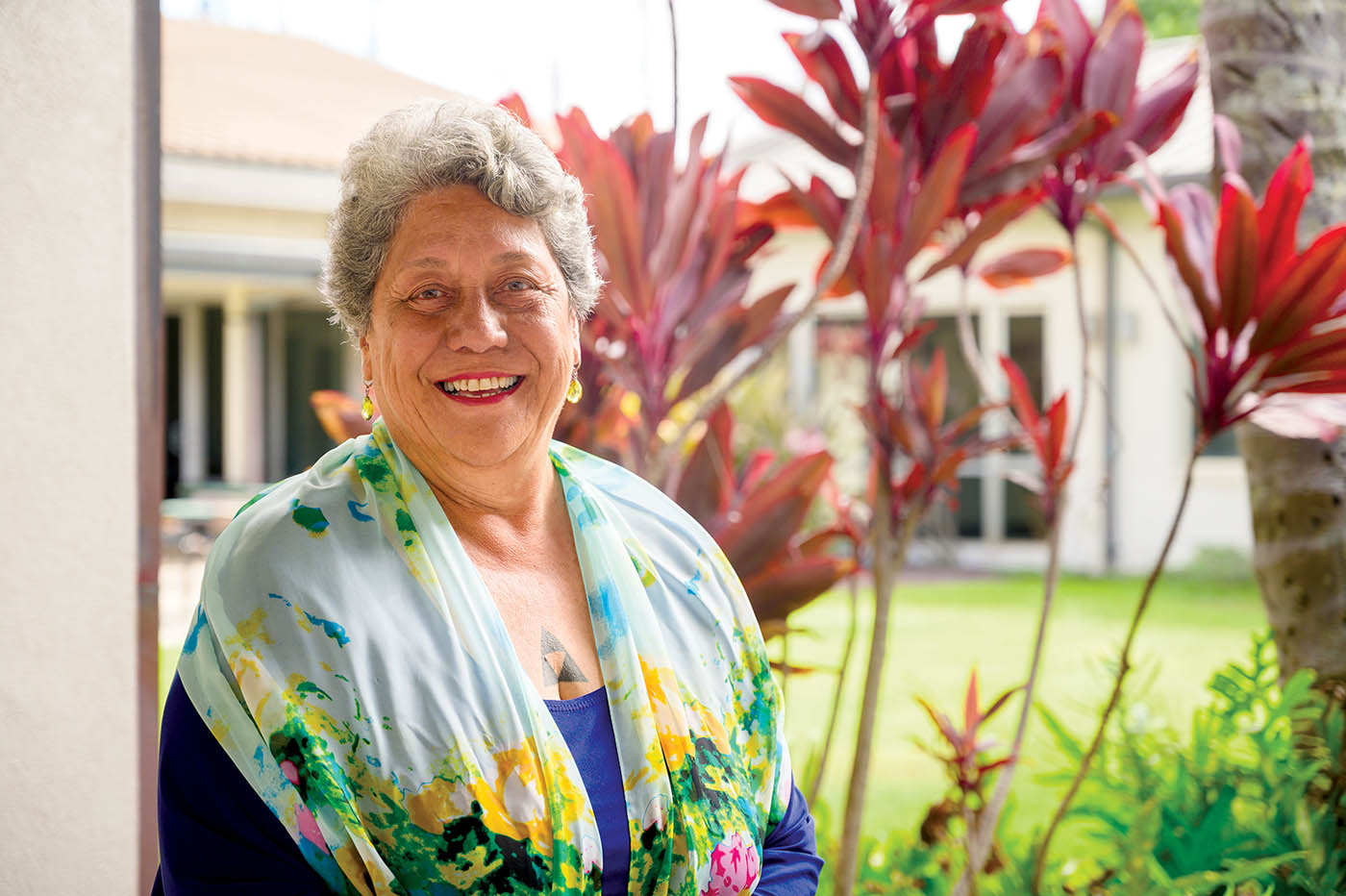
“A Hawaiian education starts in the home,” says renowned kumu hula (hula teacher) Hōkūlani Holt. Currently, she’s the director of Ka Hikina O Ka Lā, a Hawaiian student scholarship program at the University of Hawai‘i Maui College (UHMC), but her commitment to teaching, promoting, and perpetuating the Hawaiian culture is legendary.
Asked what it means to be an educated Hawaiian today, Hōkūlani says, “It’s about being a Hawaiian as much as it’s [about] being educated in the Western world.” She explains that being educated in the culture is reflected in how one behaves. “On entering a home, you first look for and greet the kūpuna [elders], then the mother, then everyone else.” She asks, “Do you only take your children to movies, to baseball games? Or do you take them fishing and surfing and to Hawaiian cultural events? Those all impact how [children] view their world.”
Thirty-five years ago, Hōkūlani helped launch the Hawaiian-language immersion preschool Punana Leo O Maui, just in time for her youngest child to attend. Hawaiian is the only language spoken in the classroom (punana leo means “nest of voices”), and lessons are culturally based. The school requires a lot of parental involvement, including the expectation that parents will learn some Hawaiian; those already fluent in the language are asked to teach it or contribute in other ways. And every year, Punana Leo’s waiting list is more than twice its thirty-student capacity.
“It is a challenge,” Hōkūlani agrees, “but the challenge is worth it. We cannot expect to trot out our children and say, ‘Talk to this lady in Hawaiian,’ because we think it’s cute. ‘Oh, look, your auntie is here. Say something in Hawaiian to her.’ No. For [the language] to live, it must live in the family.”
Hōkūlani acknowledges that some parents fear a Hawaiian-language immersion school won’t adequately prepare their children for the future. She disagrees. Youngsters there “get the same education as any child in the State of Hawai‘i, because they are in a state school. But added onto that education is Hawaiian. Nothing is subtracted.” She cites as example a protocol practiced at Kula Kaiapuni, the state’s Hawaiian-language immersion program offered on Maui at Pā‘ia Elementary, Kalama Intermediate, and King Kekaulike High School. “Every morning, the children line up outside the school and chant to request permission to enter school. And their teachers will stand there and grant them permission to enter. We want our children to know that school is important, that learning is a privilege, and you need to ask permission of your teachers to be able to do that. Asking permission is a very Hawaiian thing.
“If you think learning Hawaiian will be a detriment, don’t send [your children]. If you think it can help them know how to live well in this place we have chosen, this place we call home, and get as much or more out of their education as any other child in the public school system, Hawaiian language immersion is a possibility.”
After Punana Leo, Hōkūlani’s daughter attended the Kula Kaiapuni immersion program; she was in the first graduating class at King Kekaulike. Hōkūlani’s vision has come full circle: After earning an M.A. in social work and a Ph.D. in education, her daughter is currently working on a second Ph.D. in indigenous curriculum, and teaches Hawaiian studies at UHMC.





